So, I’m strolling along, whistling and happy in the sun, when one of the hawks that are so busy hunting in these snowy days leaps off a power pole and hassles a couple of Canada Geese who’ve split off from the flock for a bit of lolly gaggling romance and nest site exploration in the weeds of an abandoned orchard. At silent speed, the hawk sees if he can snag one of them while they’re smitten with each other in their late winter romance, but, ah, no, he can’t. I’ve been so into the sun I can’t get my camera out in time, of course, but, hey, the sun is shining so off I go, zippity do da, zippity day. Five minutes later, I get to other side of the field and look back in my whistling man kind of way. The old apricot tree there is looking fine today, don’t you think?
 I take a couple shots and then, on the fourth …
I take a couple shots and then, on the fourth …
 Whoa. The hawk is suddenly there. That was quick! Ah, it will be a sad day in the world of hawks when this tree is gone. They use it a lot on their commuter loop. It goes like this: ride a thermal up high, cruise along the side of the mountain for awhile in long loops and glides, working the slopes and then, when you get tired, cuz, whoa, that’s work, let gravity do your work for you instead, swooping silently from one rare tree to another down through the grass, hoping to catch something on the way through. Usually, as today, the intended lunch sees you just in time and raises a fuss. You have to play the odds to be a hawk. For the intended lunch, however, there are better habitats than that darned abandoned orchard with its one last apricot tree …
Whoa. The hawk is suddenly there. That was quick! Ah, it will be a sad day in the world of hawks when this tree is gone. They use it a lot on their commuter loop. It goes like this: ride a thermal up high, cruise along the side of the mountain for awhile in long loops and glides, working the slopes and then, when you get tired, cuz, whoa, that’s work, let gravity do your work for you instead, swooping silently from one rare tree to another down through the grass, hoping to catch something on the way through. Usually, as today, the intended lunch sees you just in time and raises a fuss. You have to play the odds to be a hawk. For the intended lunch, however, there are better habitats than that darned abandoned orchard with its one last apricot tree …
 Canada Geese in a Dwarf Orchard Planted by a Man Who Loves Posts
Canada Geese in a Dwarf Orchard Planted by a Man Who Loves Posts
Buy shares in a post company, that’s all I can say.
Just let a hawk try to catch anyone in this maze! You have to ask, What were those two lone geese out in the open field thinking? But, of course, they were geese, so maybe not too much thinking, plus it is February, and in February geese really do think they own the world. It is an awfully fine time of year, you have to admit, split between honking and sneaking off two by two to check out the most impossible nesting sites. It seems to work. It’s not just the geese, though, who have figured out that the orchard is a fine and hawkless place. Look who else was there …
Ring-Necked Pheasant on the Run!
An impossible photographic subject, as usual. But also safe here from hawks.
Hawks must despise farmers who have bankrupted themselves by planting too many posts. If you want to read some stories about geese and loons and other birds, check this out: Winging Home. It’s full of fun and love and wonder. And geese.
Categories: Agriculture, Grasslands, Nature Photography, Other People


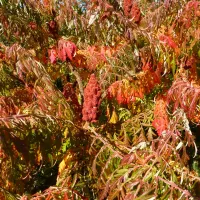
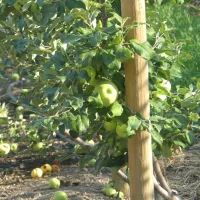



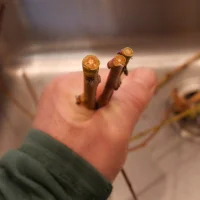


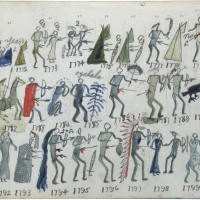
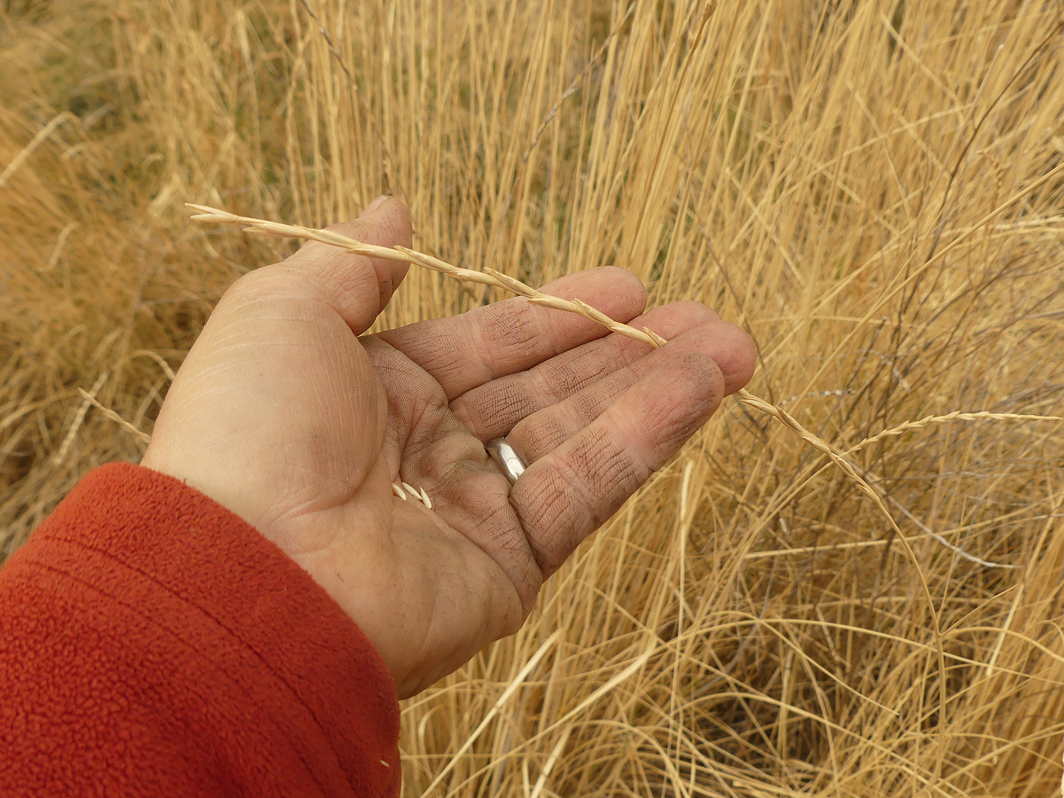




great voice (and facts)
LikeLike
Thanks! I guess my love of birds shows.
LikeLike
I am surprised to see apricots growing at your place-here in Ljubljana they usually do not survive to be that old, perhaps our winters are too cold with possible -22C each year?
LikeLike
Hi,
the weather here usually gets down to -15, but it does also get down to -20, -25, and even -40 in some years. There are old apricot trees that have survived all of those temperatures (as this one would have), and are even some that have gone wild here and there, which survive without water or care. Some varieties are very frost tender. It’s certainly a matter of which variety of apricot is planted. Perhaps it’s also a matter of when the frost comes, how prepared the trees are for it, how much snow cover there is, and so on. They do suffer continual damage to their small fruiting twigs, so need to be constantly renewed if one wants a large crop.
An interesting mystery!
Peaches here tend to endure -15 easily, then they start to get damage -30 kills them off. Still, I was pruning some peach trees last week that we planted back in 1981 they have survived -40 (once) with a lot of damage, but I have encouraged them over the years to put out new branches and some of them are still thriving. Others are about done, but that’s ancient for peach trees. The roots are Siberian C, from the Gobi Desert. That gives them root protection with no damage to -20.
best
Harold
LikeLike
I see the roots are the secret.We had several of them, several varieties (I liked the Hungarian one the most), but sooner or later they all died-suddenly the leaves felt off.Now we have to buy apricots……..
LikeLike
Sorry to hear about your apricot disaster! They are such beautiful fruits.
It sounds like you have verticillium wilt. It’s a fungus that is drawn up through the roots into the branches. Don’t interplant with eggplants, peppers, tomatoes, and such plants, and do put the plot into grass cover for a few years before planting again. If you keep the vigour moderate and keep the watering even throughout the season, you can help the tree beat the infection.
They will fare slightly better on plum roots than on apricot ones. Peach roots give quite breakable grafts not the best.
best,
Harold
LikeLike
You made me dig into subject: apricots are called fruit -trees for optimists in Slovenia,the combination of climate(too much rain among other ),fungal and viral diseases all together lead to a condition we call stroke of a apricot tree:sudden death of the tree. But the delicious fruit makes us trying again-and sometimes it is really worth it, one of our apricots lived for more than 15 years!
Anyway, there is much more as mere trees in your blog, may I invite you to be a host writer for my Botanical Garden? Would you accept my invitation to write a host post I could reblog ?Something botanical from Okanagan Okanagan?Or something you thing that would suit in a botanical garden on the other side of the ocean? Drop me a line and tell me what do you think about it (I hope it will be YES, but I will understand NO, as well π )
All the best,
Tamara
LikeLike
Hi,
I love that: fruit trees for optimists! I wonder if grafting apricots onto plums or peaches, just single branches here and there, might slow down the fungal disease do peaches grow there?
I’d love to be a host writer I’m assuming you are suggesting that I write a post just for you, post it on Okanagan Okanogan, and you reblog it, right? I have an idea I’ve been working up, about the colours of grasses (and other plants) coming out of the snow in the spring, and how they make a garden based on when their respective plant-types arose on earth in the distant past and realized that it could be followed through for an entire year. In other words, there is a botanical garden that through the seasons, from winter through spring through summer through fall and into winter again, represents the evolving story of plants on earth — repeated every year. In yet other words: a botanical garden existing in time.
Is that the kind of idea that would work at your end, or is it a little wild?
best,
Harold
LikeLike
I love wild ideas! Your proposal accepted!Do not feel under pressure, please-write the post when you will and drop me a line when you post it, so I can write a short introduction about the contributing author (you) of reblogged post.I try to stay on track reading your posts , it just happens sometimes there is too much work and so I have to skip my readings ;( , that is why I ask you to let me know when your botanical garden post is out.
Thank you , I can’t wait to read and post your post on My Botanical Garden!
LikeLike